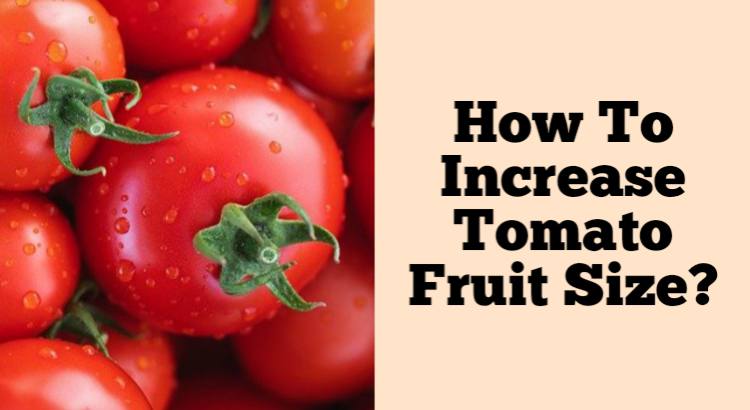Tomatoes are one of the most popular and widely grown vegetables in the world. They are known for their delicious taste, versatility in cooking, and numerous health benefits.
However, one of the biggest concerns for tomato growers is the size of the fruit. In this article, we will discuss the various ways to increase tomato fruit size, including cultural practices, genetic factors, and environmental conditions.
Cultural Practices
One of the most effective ways to increase tomato fruit size is through proper cultural practices. This includes proper pruning techniques, adequate fertilization, proper irrigation, disease and pest management, and training and staking.
Proper pruning is essential for controlling the growth and shape of the tomato plant. By removing the suckers (side shoots) that grow in the axils of the leaves, you can direct the plant’s energy towards the development of larger fruit. Adequate fertilization is also crucial for tomato growth and fruit size.
A balanced fertilization program that includes nitrogen, phosphorus, and potassium will ensure that the plant has the necessary nutrients for healthy growth and fruit development. Proper irrigation is also necessary to ensure that the plant has enough water to support growth and fruit development.
Disease and pest management is also important to keep the plant healthy and free from damage that can affect fruit size. Training and staking are also essential to keep the plant upright and to prevent fruit from touching the ground, which can lead to rot and damage.
Genetic Factors
Another way to increase tomato fruit size is through genetic factors. This includes selecting tomato varieties known for large fruit size, hybridization, and genetic modification.
Selecting tomato varieties known for large fruit size is one of the easiest and most effective ways to increase fruit size. Some popular varieties known for their large fruit size include ‘Beefsteak’, ‘Big Boy’, and ‘Brandywine’.
Hybridization is also a useful technique for increasing fruit size. By crossing two different varieties, the offspring may have characteristics of both parents, including larger fruit size. Genetic modification is another technique that is being researched to increase tomato fruit size. However, it is a controversial method and more research is needed before it can be widely adopted.
Environmental Factors
Finally, environmental factors can also play a role in increasing tomato fruit size. Light intensity, temperature, humidity, and carbon dioxide levels all play a role in fruit development.
High light intensity can increase the rate of photosynthesis, which can lead to larger fruit size. Additionally, high light intensity can also increase the number of flowers, which can lead to a higher yield. Temperature also plays a role in fruit size.
Optimal temperatures for tomato growth and fruit development are between 70-80°F. High humidity can lead to fungal diseases which can affect the fruit size. Carbon dioxide levels can also affect fruit size. High CO2 levels can increase the rate of photosynthesis and lead to larger fruit size.
Conclusion
In conclusion, increasing tomato fruit size is an important concern for both commercial growers and home gardeners. Proper cultural practices, genetic factors, and environmental conditions are all ways to increase tomato fruit size. By implementing these methods, growers can increase their yield and profits. However, it is important to note that more research is needed in certain areas, particularly genetic modification.

